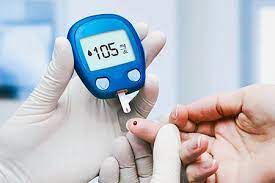
A recent study has revealed that augmenting daily steps by 3,000 can lead to a significant reduction in high blood pressure among older individuals. This research was conducted by Pescatello in Duck-Chun Lee’s lab at Iowa State University, alongside Elizabeth Lefferts, the primary author of the paper, and other collaborators. The results have been published in the Journal of Cardiovascular Development and Disease.
Pescatello, an authority on hypertension and exercise, emphasized the pervasive nature of high blood pressure in our aging population, particularly in the United States. Her prior work demonstrated the immediate and enduring impact of exercise on lowering blood pressure in hypertensive adults. This study aimed to ascertain whether older adults with hypertension could reap similar benefits by moderately increasing their daily walking, a form of physical activity accessible to this demographic.
Lee pointed out the simplicity and convenience of walking as an exercise choice for older adults, requiring no special equipment and adaptable to various settings and schedules. The study concentrated on a cohort of sedentary individuals aged between 68 and 78, who averaged about 4,000 daily steps before the intervention. Following an extensive review of existing research, Lee determined that a target of 3,000 additional steps was both reasonable and beneficial, bringing most participants to a daily total of 7,000 steps, in alignment with the recommendations of the American College of Sports Medicine.
Despite the challenges posed by the COVID-19 pandemic, the research team conducted the study entirely remotely. Participants were supplied with pedometers, blood pressure monitors, and step diaries to track their daily walking. On average, participants experienced a notable reduction of seven and four points in systolic and diastolic blood pressure, respectively, following the intervention.
Lefferts expressed excitement about the effectiveness of this simple lifestyle intervention, which proved comparable to structured exercise and certain medications. The findings indicated that the 7,000-step regimen achieved by participants in the study produced reductions in blood pressure on par with those seen with anti-hypertensive medications. Notably, even participants already on such medications saw improvements in systolic blood pressure from increasing their daily activity.
Pescatello underscored the complementary role of exercise alongside medication in managing hypertension. She emphasized that exercise enhances the effects of blood pressure medication without negating its benefits. Interestingly, the study revealed that walking speed and continuous bouts of walking were less crucial than the overall volume of physical activity.
Pescatello concluded, “The key takeaway is that focusing on total volume of physical activity—whatever fits into one’s routine—can confer significant health benefits.”











